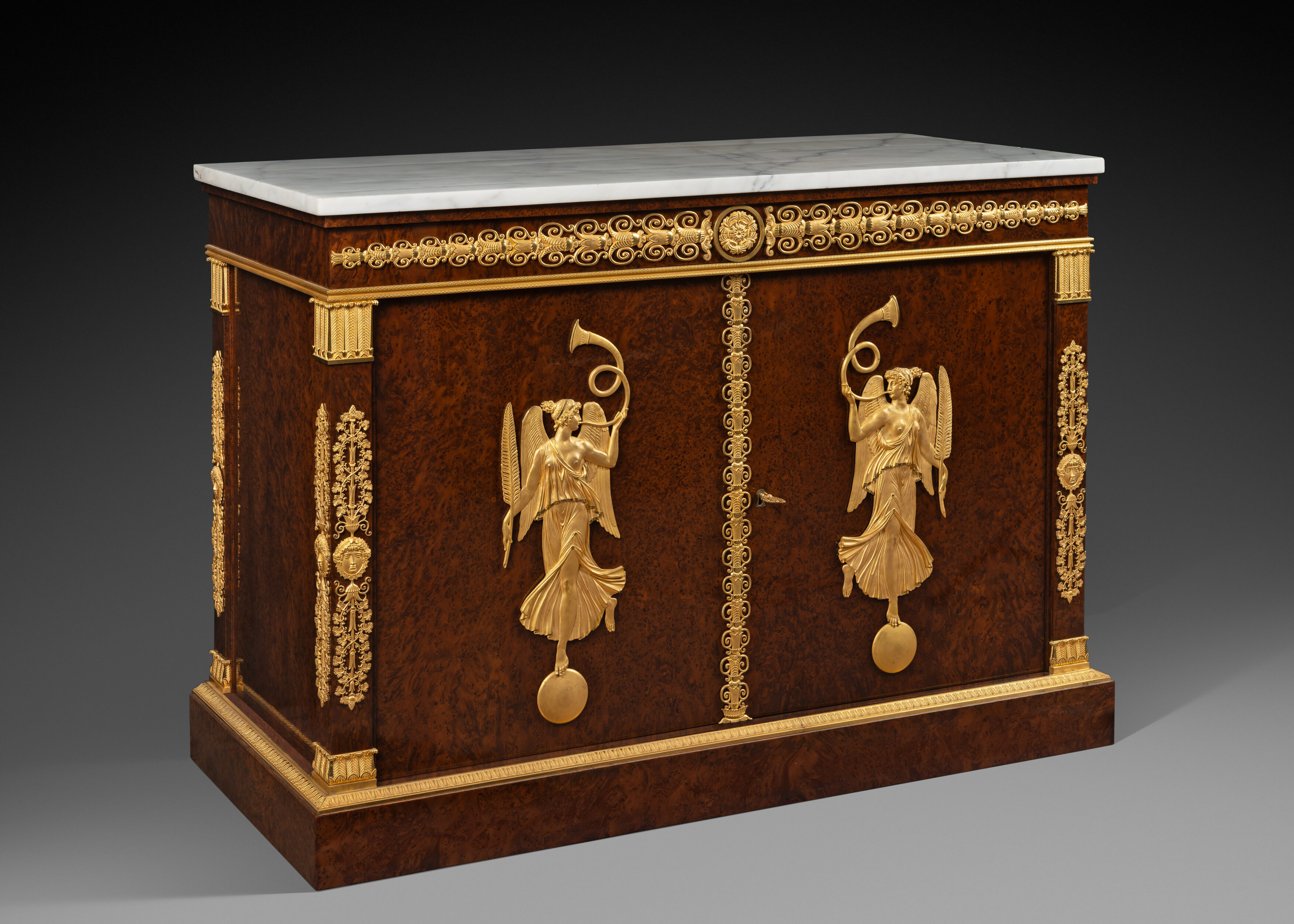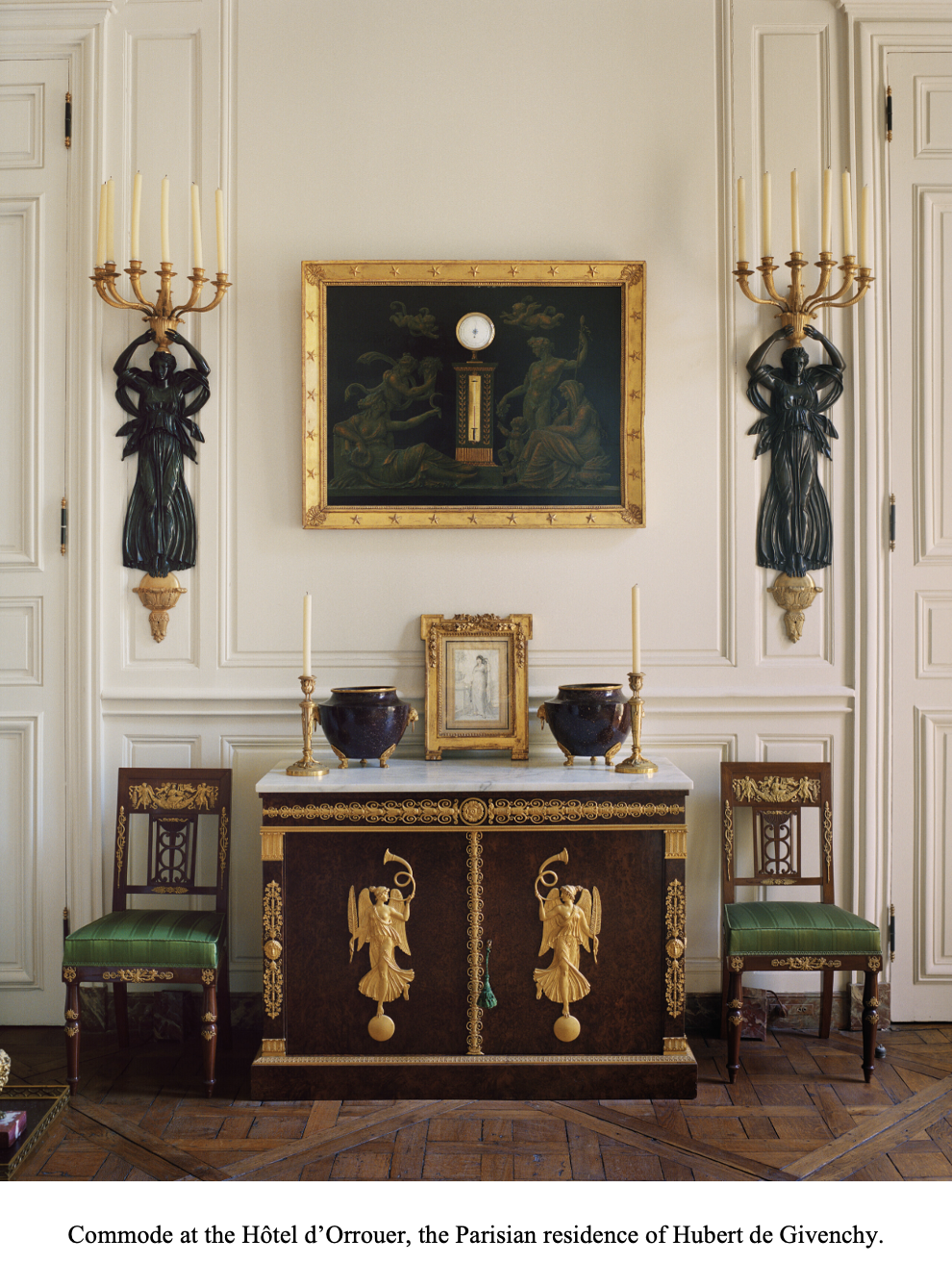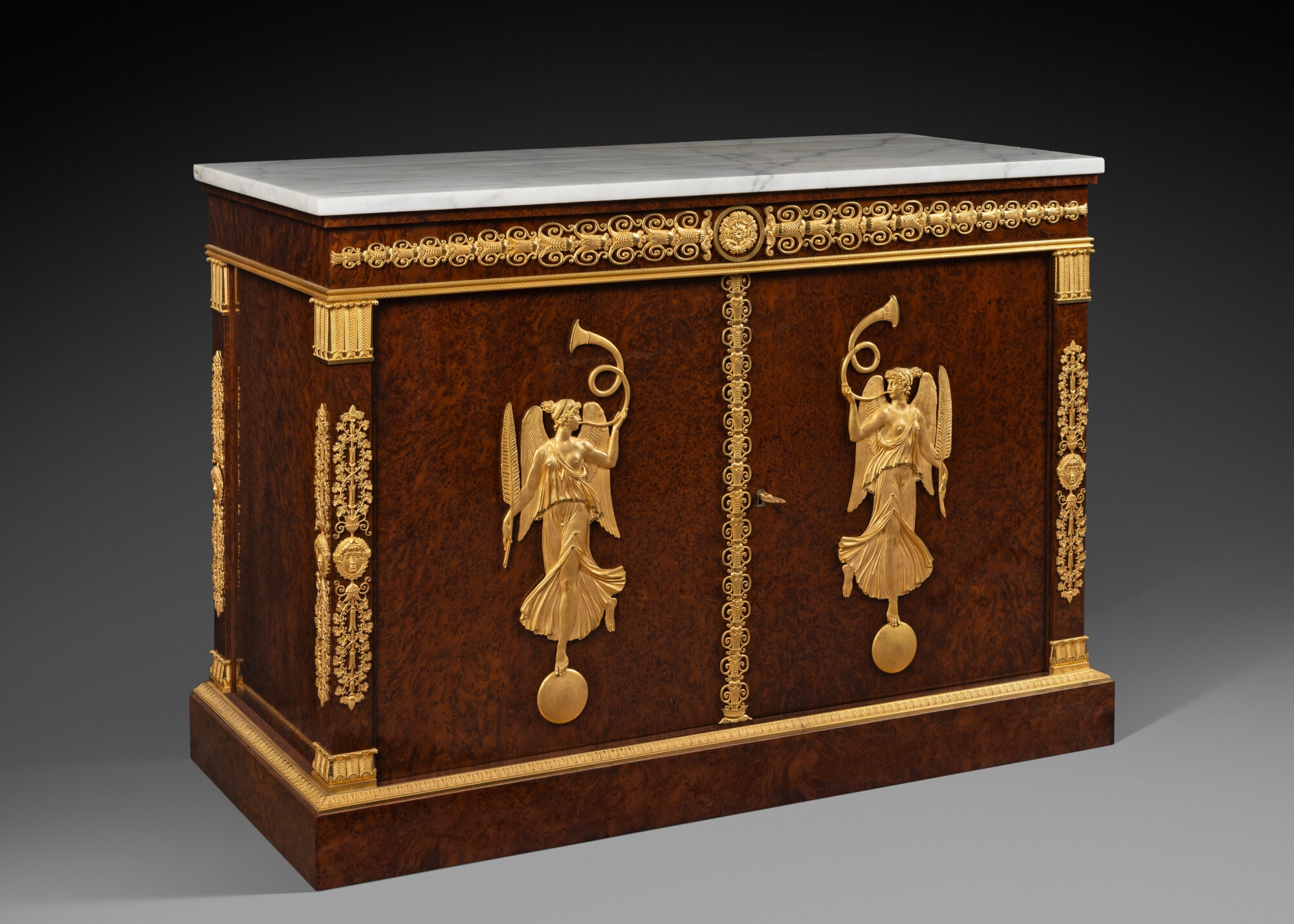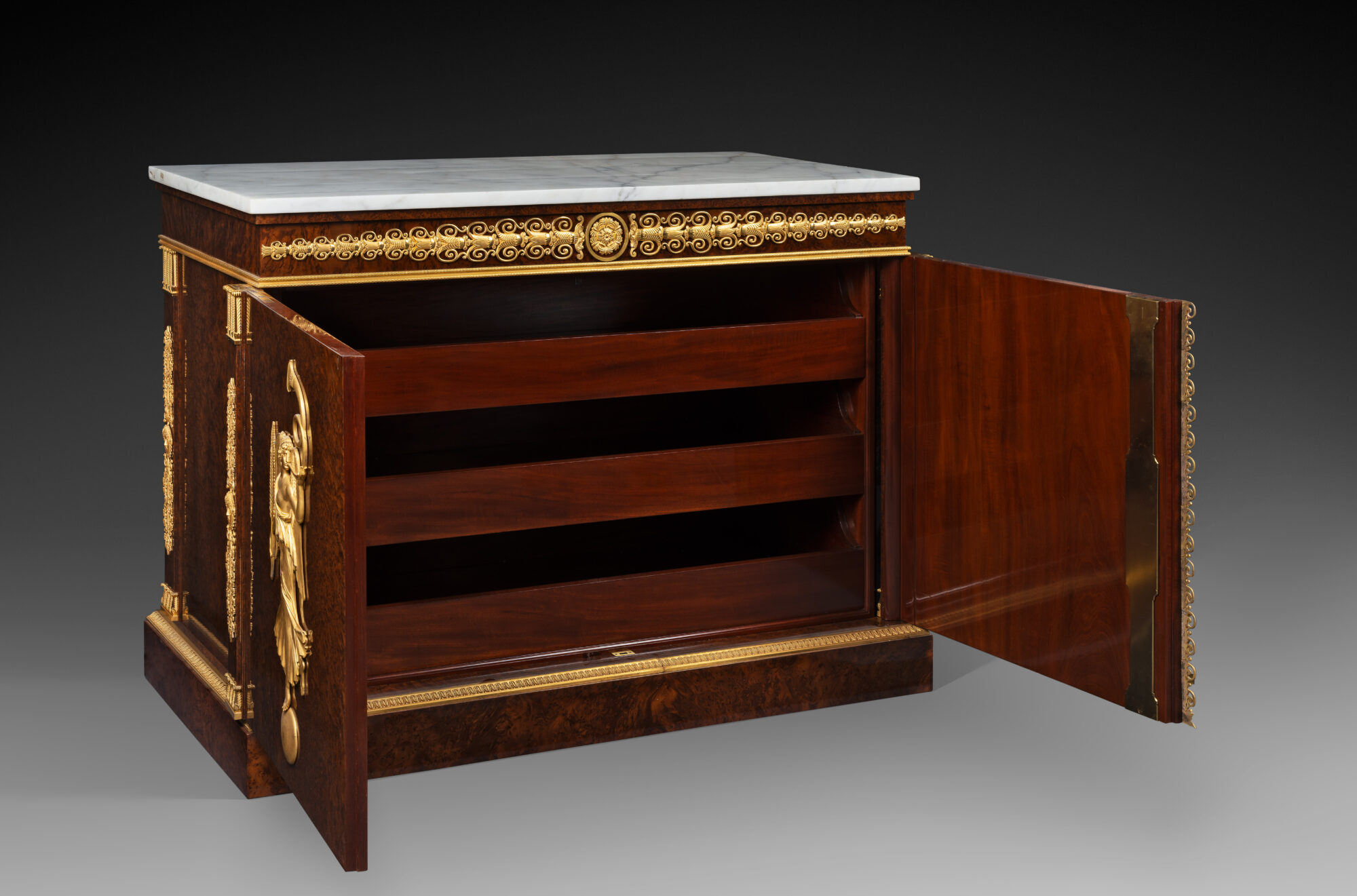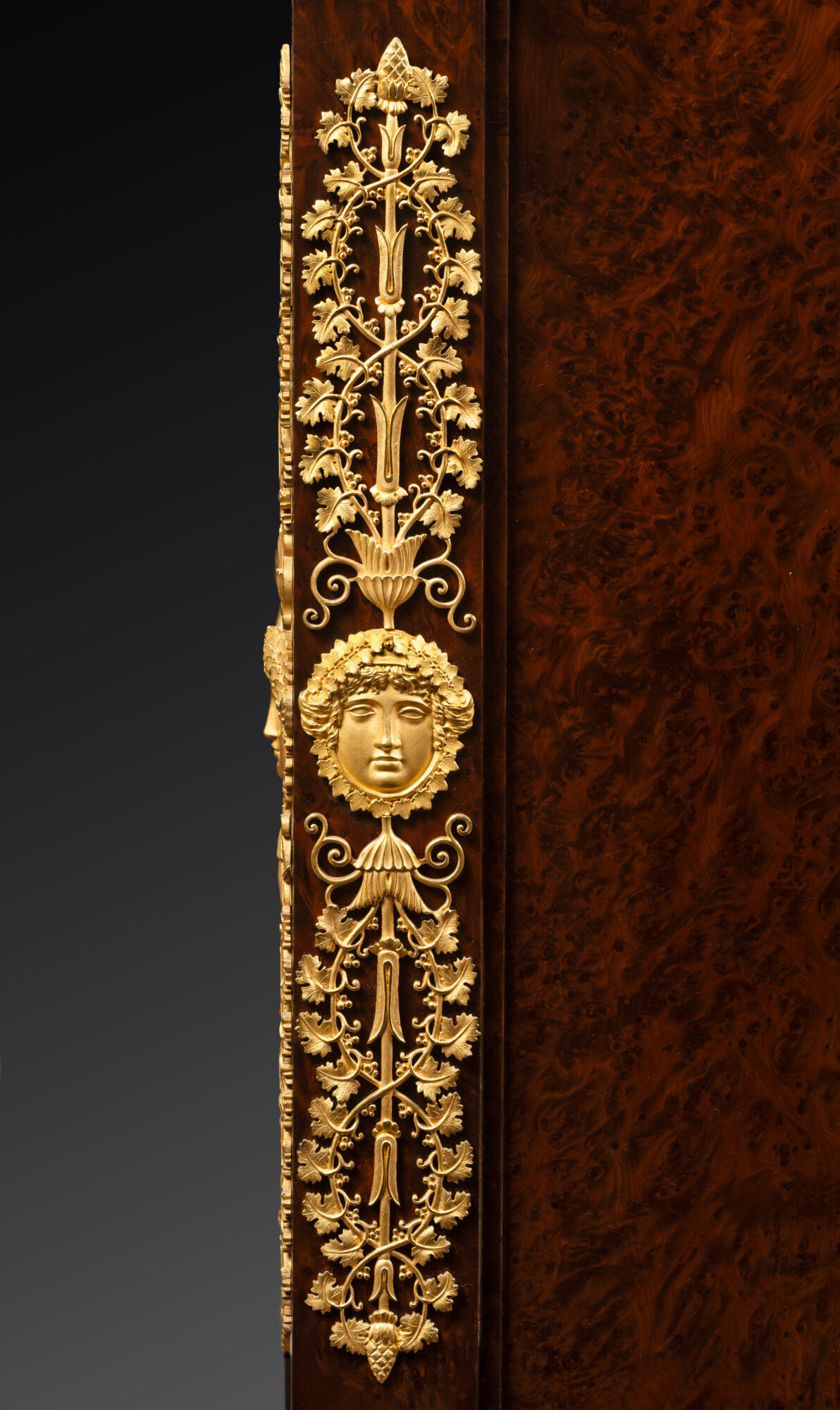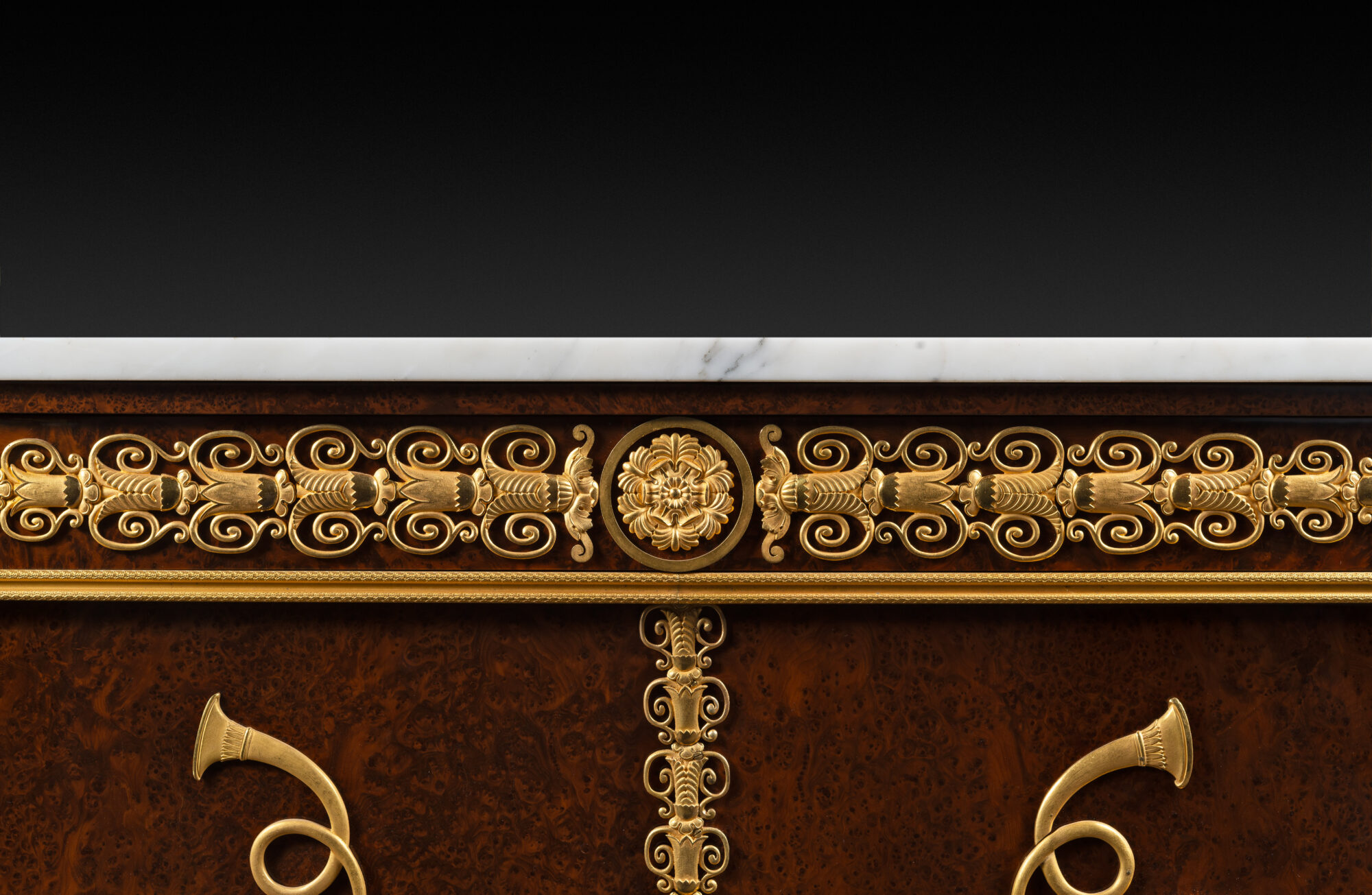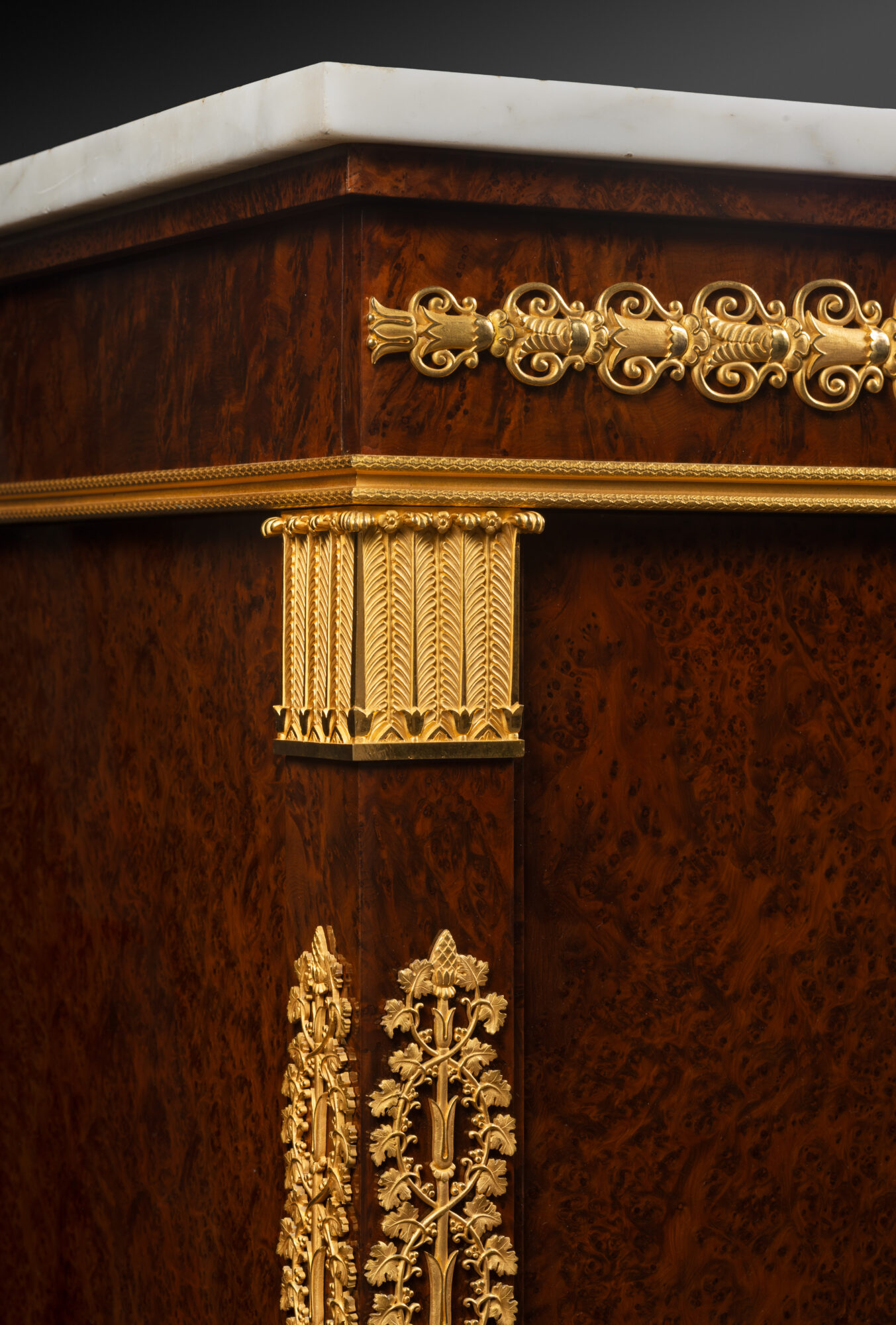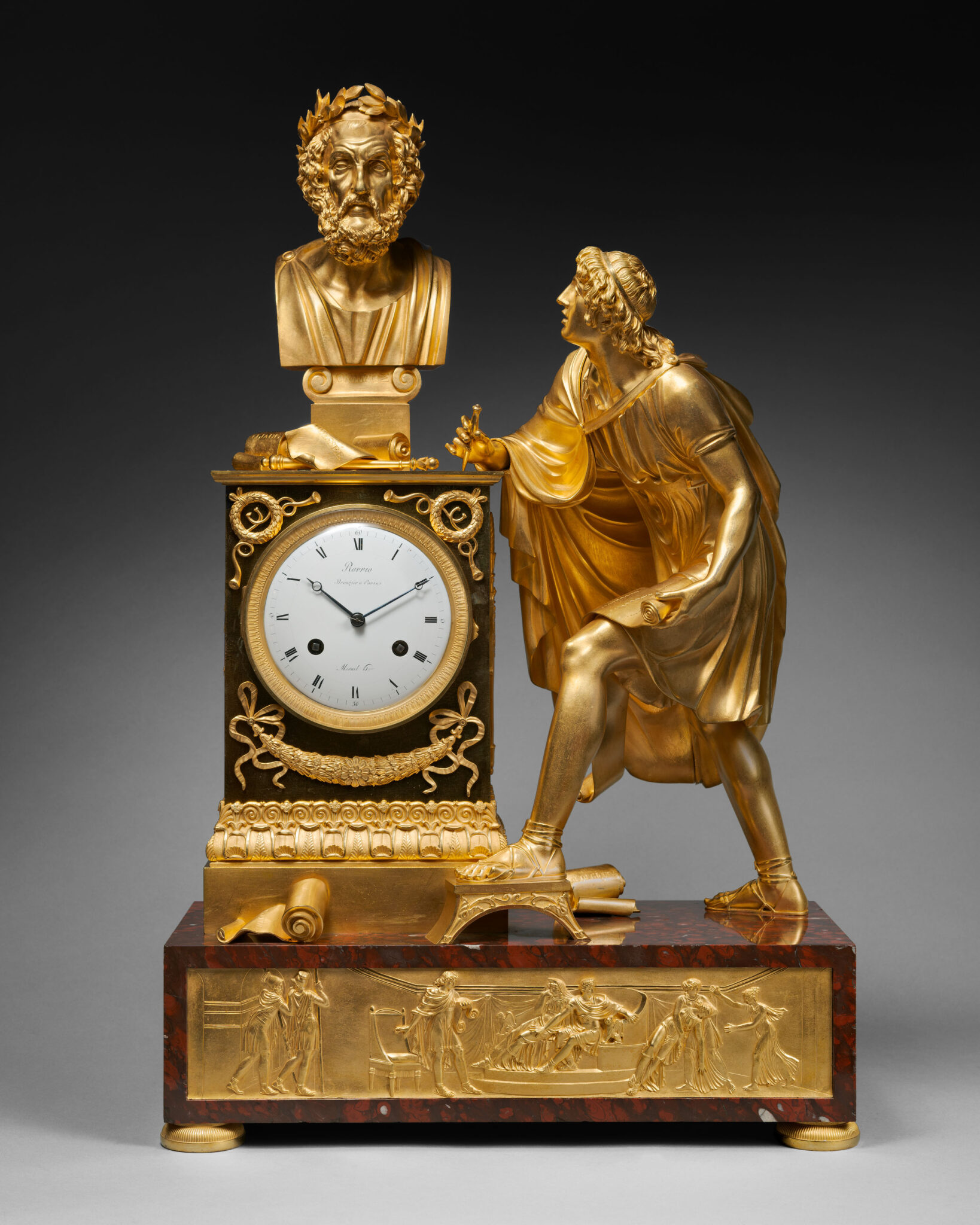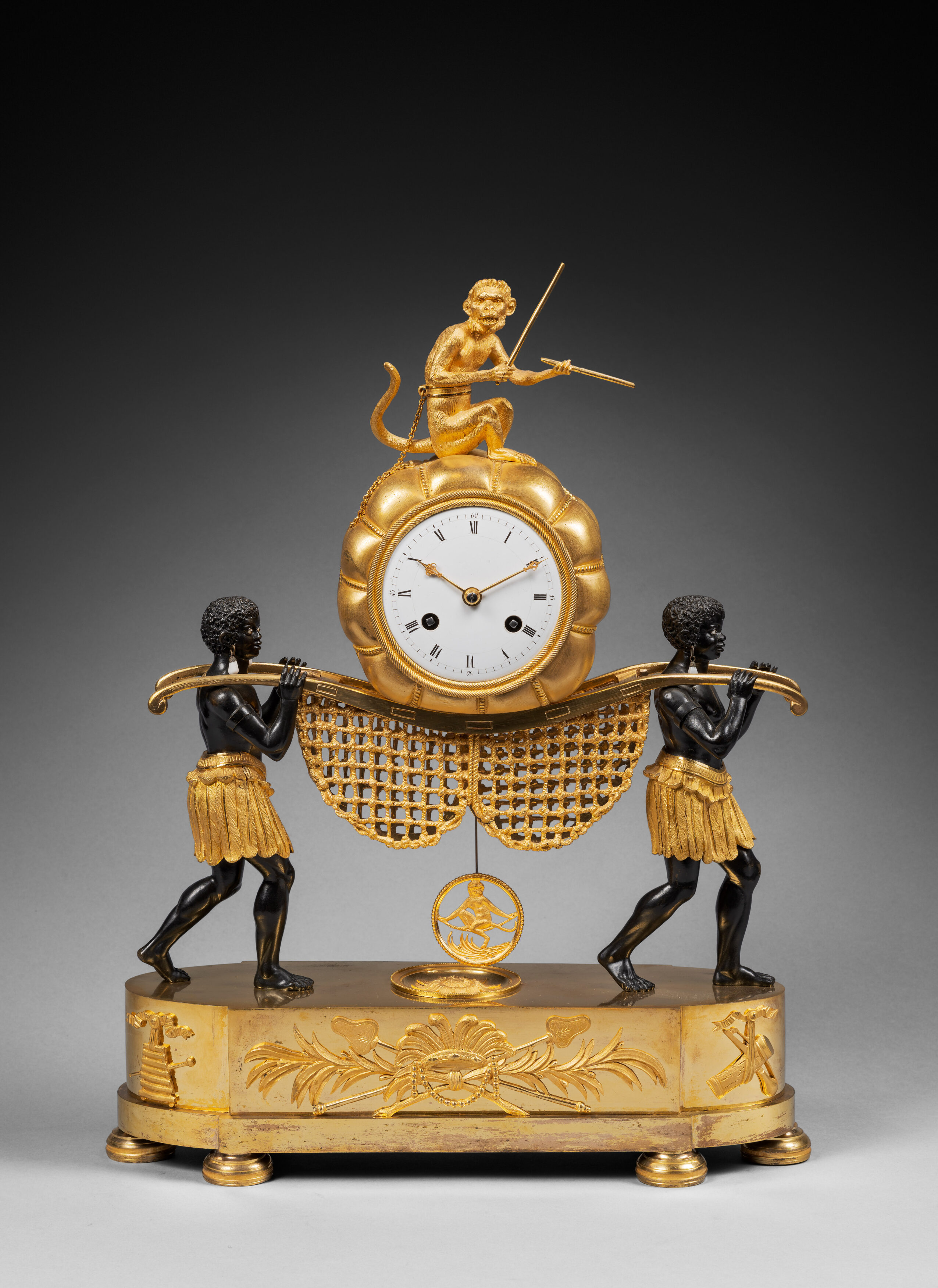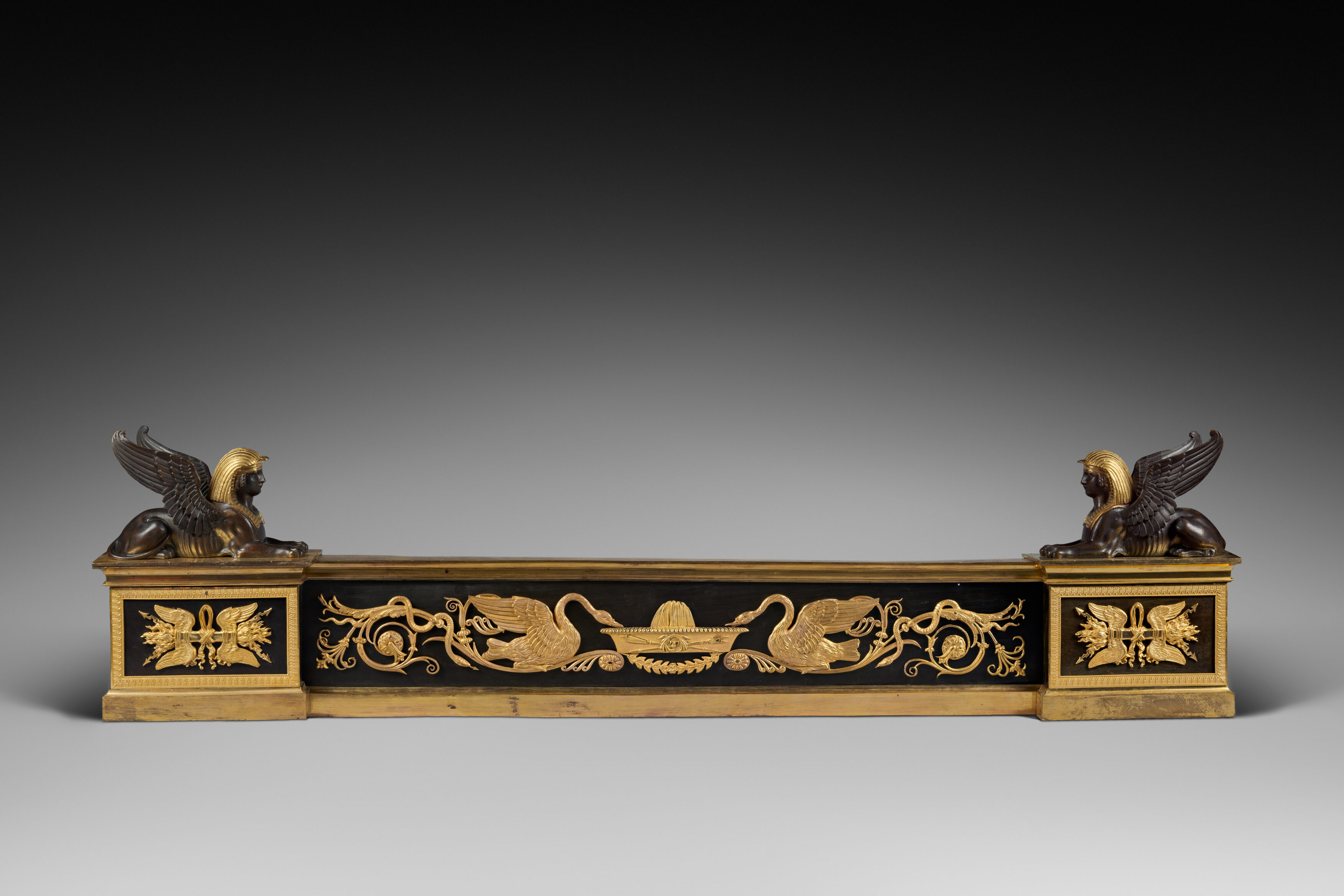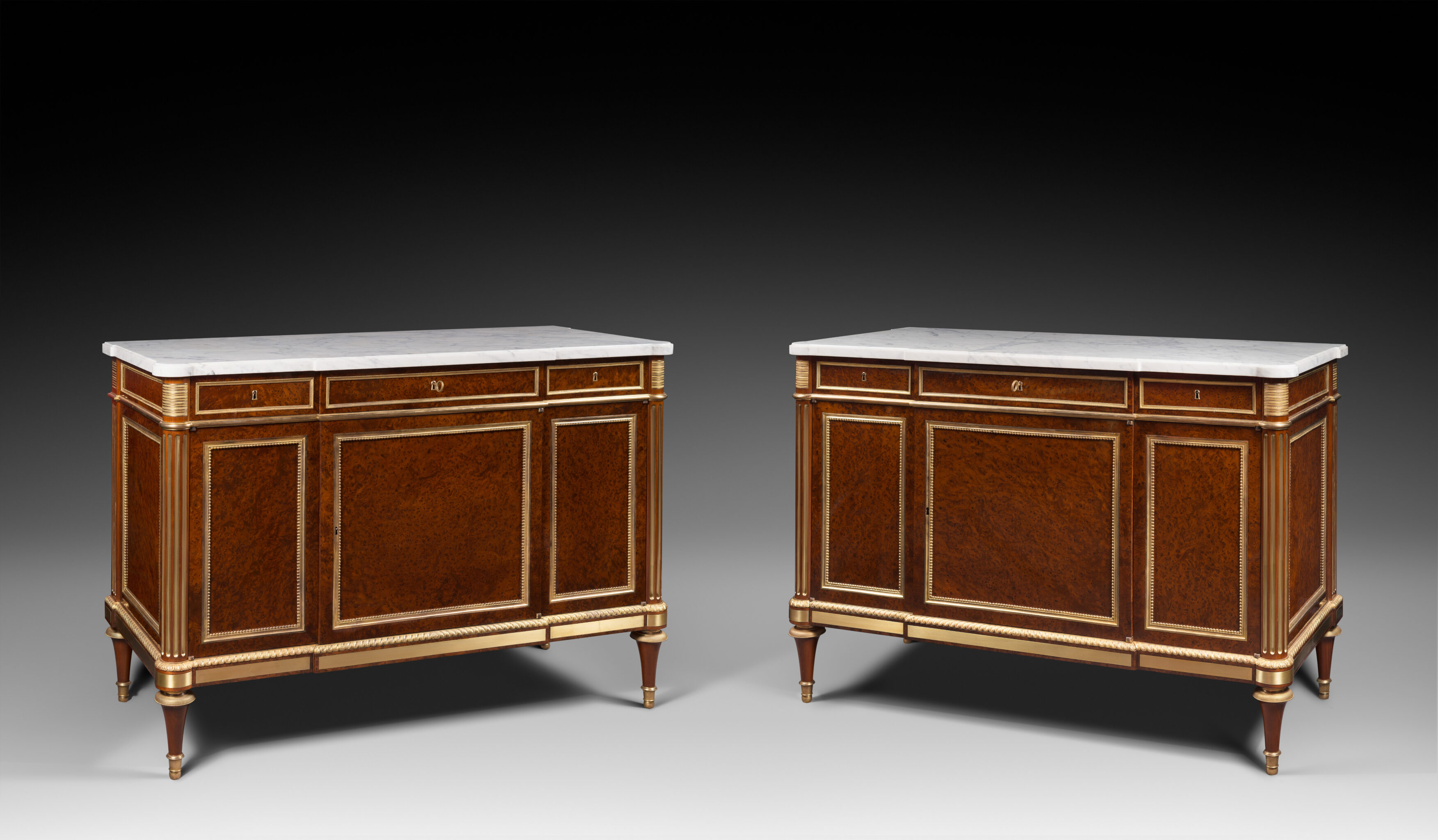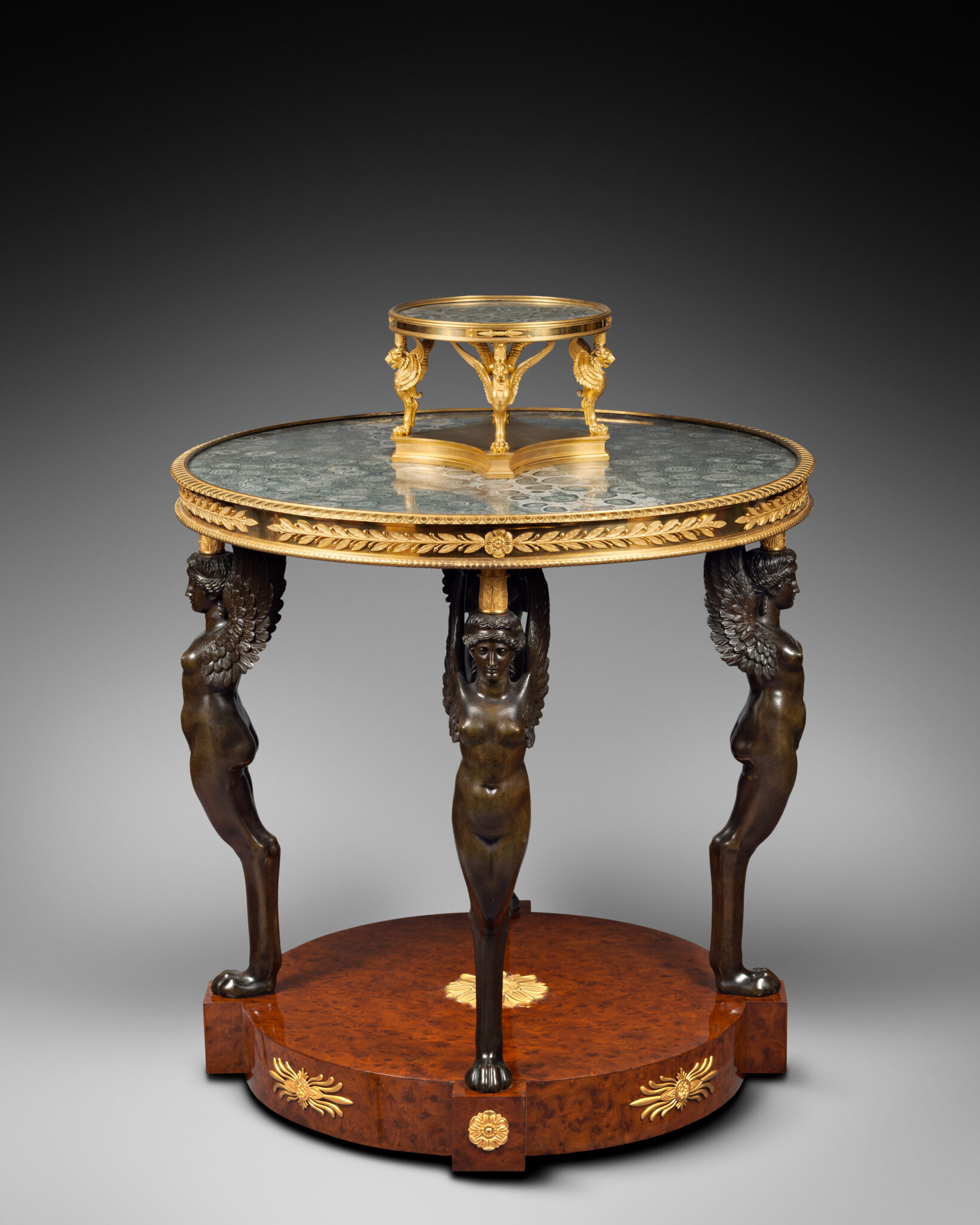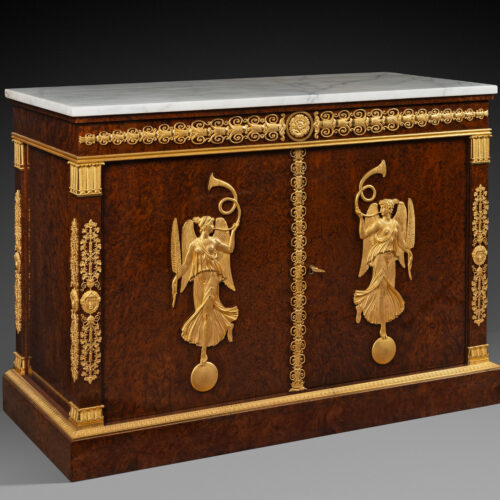Exceptional English-Style Commode in Mahogany and Yew Burl Veneer with Matte Gilt Bronze Mounts
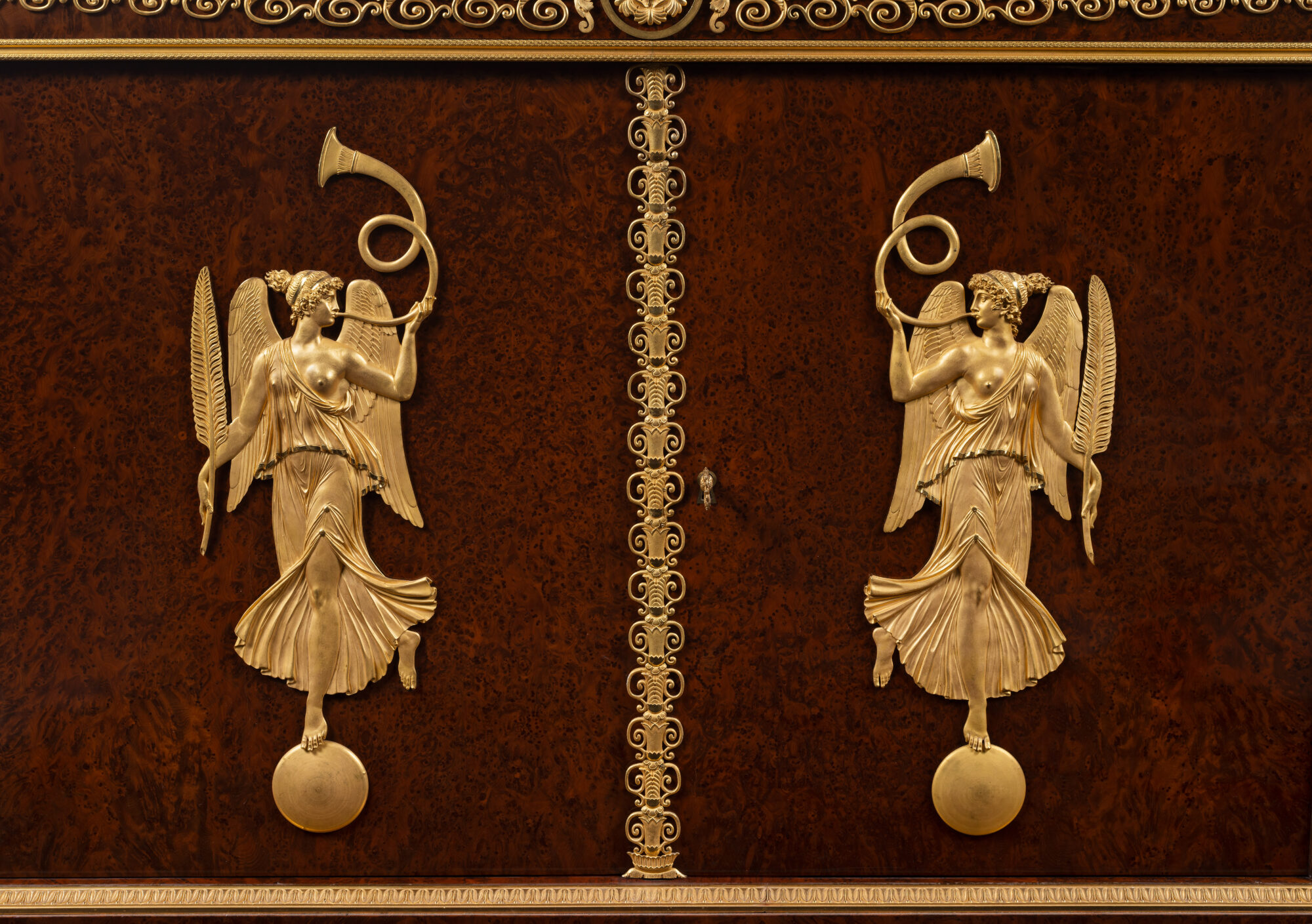
Attributed to Adam Weisweiler
Probably made under the supervision of Martin-Eloi Lignereux
The bronze mounts attributed to Thomire-Duterme
Paris, Empire period, circa 1805-1810
Provenance :
Collection of Monsieur Hubert de Givenchy (1927-2018).
Bibliography :
– Christophe Huchet de Quénetain, Les styles Consulat et Empire, Paris, 2005, p. 127, fig.95 (illustrée).
– Empire, Mise en scène par Monsieur Hubert de Givenchy, Christie’s, Paris, September 8-25, 2014, p. 25-29, catalogue n°3 (illustration).
– Patricia Lemonnier, Weisweiler, Editions Monelle Hayot, Paris, 1983.
– Jean-Pierre Samoyault, Mobilier français Consulat et Empire, Paris, 2009.
Exhibition :
Empire, Mise en scène par Monsieur Hubert de Givenchy, Christie’s, Paris, September 8-25, 2014, catalogue n° 3.
The present commode, made from mahogany and yew burl veneer, has a deliberately sober design that is meant to highlight the bronze mounts that stand out against the sheets of veneer that were carefully selected by the cabinetmaker. Rectangular in shape, the commode features a tabletop framed by a concave band that surmounts a wide drawer on the façade, which itself surmounts two wide doors that open to reveal the interior, which contains three drawers “in the English style” and is flanked by two lateral pilasters. The solid base which forms the plinth is surmounted by a tabletop of white marble with gray veins. The commode is very lavishly adorned with finely chased bronze motifs that are matte gilded; they feature cups with stylized lotus leaves that frame a medallion centered by a rosette, sides with bases and leaf-decorated chapters with masks of Bacchus flanked by interlacing grape leaves and winged female figures representing Fame, which stand on disks and play the trumpet, while holding palm leaves.
This important commode with two doors is part of a small group of very high-quality furniture that was delivered during the Empire period by Parisian artisans such as Jacob Desmalter, Charles-Joseph Lemarchand and the Thomire-Duterme firm. The present commode is clearly attributable to cabinetmaker Adam Weisweiler; it was made under the supervision of the marchand-mercier Martin-Eloi Lignereux.
The association with Weisweiler began during the Ancien Régime, when Dominique Daguerre Lignereux’s, future partner, supplied furniture to most of the great Parisian collectors of the time. During the early years of the 19th century, Weisweiler, who continued to be quite active, continued to work for the Maison Lignereux, formerly the Maison Daguerre & Lignereux, and often sourced his bronze mounts from the Maison Thomire-Duterme, as can be seen from the cabinetmaker’s wife’s posthumous inventory. In it are mentioned the large sums the bronziers owed to the artisan. Several contemporary pieces of furniture are comparable and sometimes feature identical bronze mounts. Among them, there is a commode with three doors made of cedar burl, which is now in the Royal Palace in Naples. On its pilasters there are bronze mounts that are identical to those of the present commode (see P. Lemonnier, op.cit., p. 52-53, figs. 174-175). A secrétaire in yew root veneer, which Thomire-Duterme delivered in 1809 for the bathroom of Empress Joséphine in the Château de Fontainebleau, features lateral panels that are adorned with figures of Fame that are identical to those on the present commode (illustrated in J-P. Samoyault, op.cit., p. 194-207).
Adam Weisweiler (1744 - 1820)
Adam Weisweiler is a cabinetmaker who became a master in Paris on March 26, 1778. Having settled in the Faubourg Saint-Antoine quarter, he quickly gained renown, becoming one of the most important cabinetmakers of the final years of the reign of Louis XVI. He worked for the most important collectors of the time through the intermediary of marchand-merciers Dominique Daguerre and Martin-Eloi Lignereux. The Revolution does not seem to have greatly affected him; at this time he purchased several buildings. He continued to be active during the Empire period, working for the Queen Hortense, among others.
Pierre-Philippe Thomire (1751 - 1843)
Pierre-Philippe Thomire was the most important Parisian bronzier of the last quarter of the 18th century and the first decades of the following century. Early on in his career he worked for Pierre Gouthière, ciseleur-fondeur du roi, and toward the mid-1770’s began working with Louis Prieur. He later became one of the bronziers attached to the Manufacture Royale de Sèvres, creating the bronze mounts for most of the important creations of the day. After the Revolution, he purchased the stock of Martin-Eloi Lignereux, thus becoming the most important suppliers of furniture bronzes for châteaux and Imperial Palaces. In addition, he worked for a wealthy private clientele, both French and foreign, including several of Napoleon’s Marshals. Thomire retired in 1823.
Martin-Éloi Lignereux (1751 - 1809)
Martin-Eloi Lignereux was one of the most important marchand-merciers (merchants of luxury objects) of the last quarter of the 18th century and the early years of the following century. On April 1, 1787, he went into partnership with Dominique Daguerre, thus becoming the Parisian representative of the Daguerre & Lignereux firm, which was established at 85, rue Saint-Honoré. After Daguerre’s retirement in 1793, he continued to run the firm with great success, while conserving his predecessor’s clientele and playing an important role in the renewal of contemporary Parisian decorative art. In 1801, he was awarded a gold medal at the Exhibition of the Products of Industry, where it was noted that “in the opinion of all observers, the furniture made by Citizen Lignereux is remarkable for its elegance and lavish embellishments, for the choice of the appropriate form for each piece, and finally, for the exactness and high-quality finishing of both the interiors and the exteriors”. Several years previously, his daughter Adélaïde-Anne had married the renowned Parisian cabinetmaker François-Honoré-Georges Jacob, known as Jacob-Desmalter. In 1804 Lignereux retired, selling his business to the bronze caster Pierre-Philippe Thomire. During his active years, Lignereux worked for the most influential collectors of the day, including the Duke d’Aumont-Valentinois, Queen Marie-Antoinette, the Count d’Artois (brother of King Louis XVI), the Baron de Breteuil, the Prince of Wales (future King George IV of England), Czar Paul I of Russia, and Napoleon Bonaparte.
